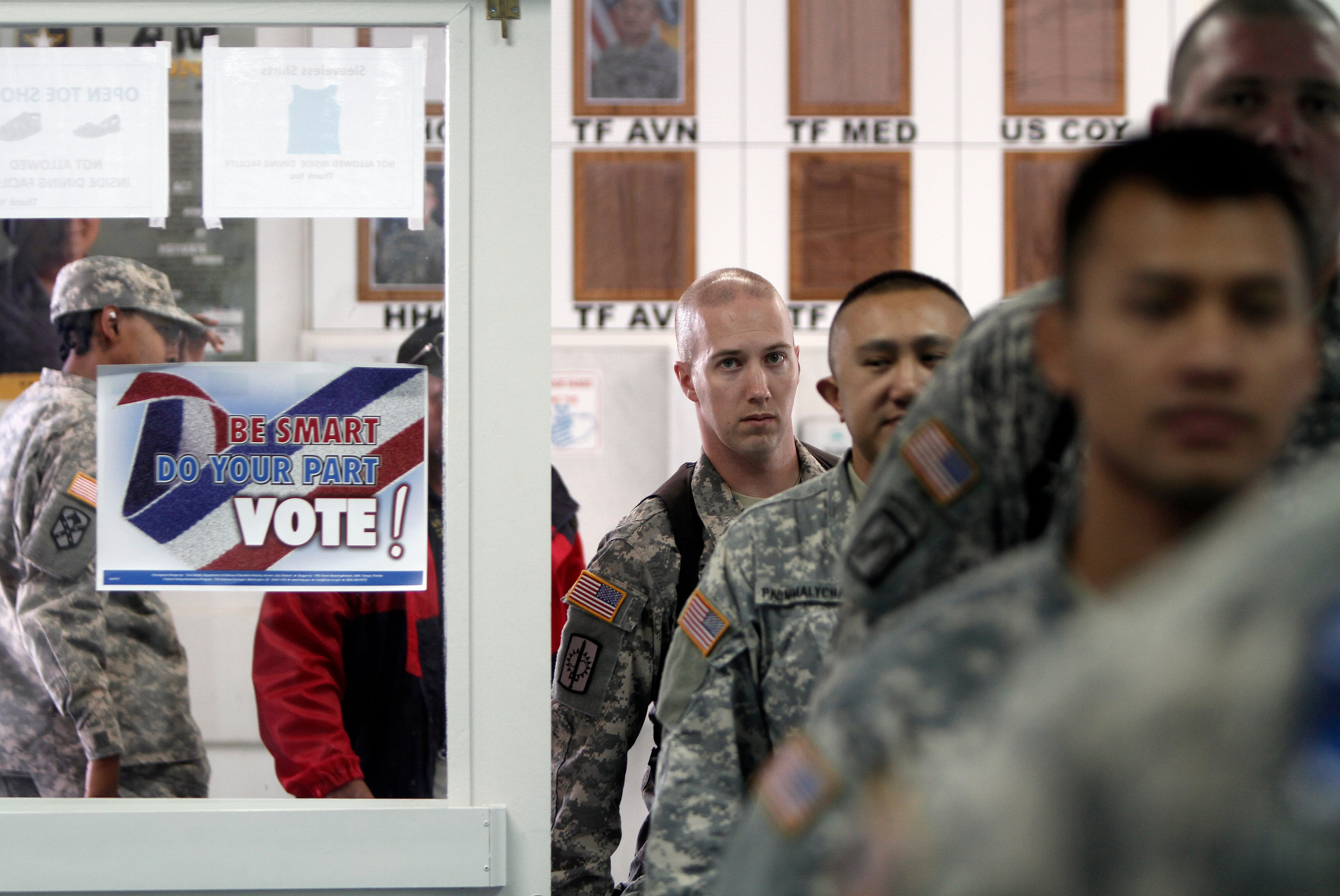There are three ways to become an officer in the Army. You can attend the United States Military Academy at West Point, you can join the Army's Reserve Officers' Training Corps while earning your college degree or you can attend the rigorous 12-week Officer Candidate School.
The U.S. Army’s Officer Candidate School (OCS) was established in 1941 when the Secretary of the War Department (the original name of the Defense Department) and the Army Chief of Staff saw a need for a faster program to commission officers, according to a news release from the United States Army Officer Candidate School Alumni Association (USAOCSAA).
That spring, the Selective Service Program had brought close to a million new soldiers to the Army, greatly increasing the need for officers.
Last September marked the 75
anniversary of the U.S. Army’s first Officer Candidate School class at Fort Benning, Georgia.
Initially, OCS programs were created for individual branches in the Army. The first were Infantry, Field Artillery and Coastal Artillery Officer Candidate Schools, established in a plan by Brigadier General Asa L. Singleton, Commandant of the Infantry School. Soon after the first officer candidates were commissioned, the War Department announced the expansion to 10 branch schools with an initial total enrollment of 2,300: Infantry, Signal Corps, Armor, Artillery, Coast Artillery, Quartermaster, Medical Corps, Engineering, Cavalry and Ordnance.
The 12 to 13 week programs were some of the most intensive training the Army had to offer, leading to the OCS motto “Standards, No Compromise.”
During World War II, OCS became the leading source of new Army officers, with candidates commissioning as second lieutenants upon graduation. By the end of the war, the Army had 8.3 million soldiers. From 1941 to 1947, over 100,000 were enrolled in 448 infantry OCS classes, according to the news release. Two out of three candidates would pass the rigors of these OCS classes, at a 67 percent commissioning rate.
Roughly 800,000 officers who served in World War II were OCS graduates across all of the Army’s branches.
After the war, all OCS training was transferred to the Army Ground General School at Fort Riley, Kansas, where it was later discontinued in 1950.
Infantry, Artillery, Signal, Engineer, Ordnance, and Antiaircraft OCS programs were reactivated for the Korean War in 1951. Infantry and Artillery remained the only active OCS programs after that war.
The Army was expanded in 1965 as the conflict in Vietnam grew. It needed 40-50,000 new officers, but ROTC and West Point were producing less and less. Engineer, Signal Corps, Armor, Ordnance, Quartermaster and Transportation OCS programs were added.
In April 1973 the Branch Immaterial Officer Candidate Course was created at Fort Benning, except for the Women’s Army Corps (WAC) OCS which remained at Fort McClellan, Alabama until merging with the Fort Benning program in 1976.
In the decades since, Army OCS has reflected the needs of the country, expanding for 1991 Gulf War, peacekeeping operations in the Balkans, the Iraq War and continuing operations in Afghanistan. In 1998, National Guard officer candidates began training with their active duty and Army reserve counterparts at Fort. Benning.
Today, officer candidates entering the military for the first time attend Basic Combat Training for 10 weeks at Fort Benning before beginning the 12 week OCS. Upon graduating, the newly commissioned officers do branch training at one of 16 different branch schools around the country.
Officer Candidates are required to hold a Bachelor’s Degree, whether they have prior service experience or not. Applicants for OCS have to have scored much higher than their enlisted counter parts on the Armed Services Vocational Aptitude Battery (ASVAB) exam.
Additionally, applicants have to score higher on the Army Physical Fitness Test (APFT) than enlistees. Candidates must be between the ages of 19 and 32, accepting commission before their 34
birthday,
. They must also be eligible for a Secret Security Clearance, with some branches—such as Military Intelligence—requiring a higher level clearance.
Before being admitted to OCS, applicants have to go through a rigorous medical exam at a Military Entrance Processing Station (MEPS). If cleared, they then prepare a multi-page binder with school transcripts, letters of recommendation, identifying documents, a typed and hand-written personal statement, their APFT score, medical records, their security clearance records and other documents prepared by their recruiter.
The packet is then sent to a board of officers from Army Personnel Command for review, who then interview the applicant. OCS board hearings convene regionally about four times per year. If the applicants meet all of the necessary requirements and present themselves as respectable and reliable future leaders during questioning by the board, they are then offered a slot at OCS.
They still are not officers though. They are candidates. The graduation rate from OCS was 84 percent for FY2015 and was at 90 percent for FY2016 when the 75
anniversary occurred last September,
.
Once the candidates graduate, they are now officers and are deemed ready to take on a leadership role in the U.S. Army.
The Army’s Officer Candidate School has many well-known alumni that have been depicted by Hollywood, elected to office, appointed to top Defense leadership positions and featured in the news. Some names include former U.S. Senator and Senate Majority Leader Robert Dole, former Secretary of Defense Caspar Weinberger, four-star General and commander of the 2003 invasion of Iraq Tommy Franks, former Governor of Arkansas Winthrop Rockefeller, Major Richard Winter—depicted in the HBO series
Band of Brothers
—and U.S. Senator from Arkansas Tom Cotton.
Today, Army OCS is consolidated at Fort Benning under The U.S. Army Maneuver Center of Excellence, 199th Infantry Brigade, 3d Battalion, 11th Infantry.
The USAOCSAA continues to support all aspects of OCS and encourages active, retired, veteran and OCS alumni family members to connect with one another
and through events the association regularly coordinates.




